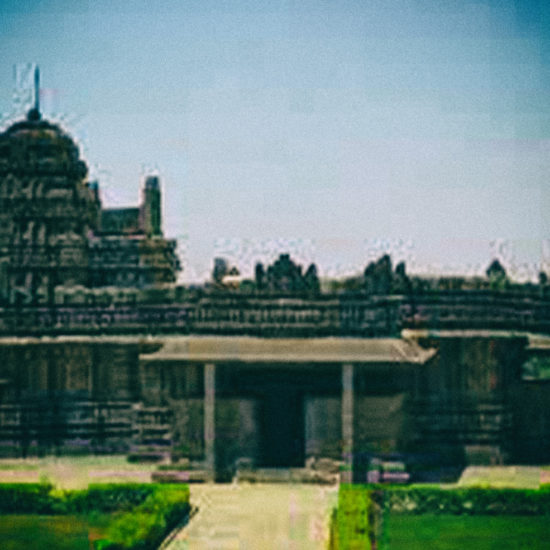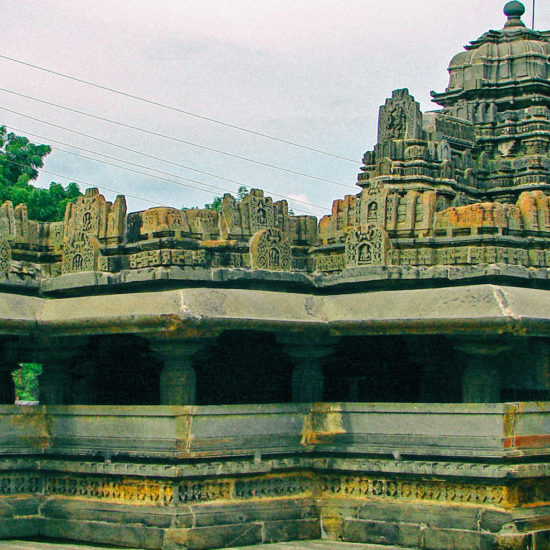Haveri district is almost in the centre of Karnataka with equal distance from Bidar in the far north to Kollegal in the far south. It is surrounded by Dharwad and Gadag in the north, Ballari and Davanagere in the east, Shivamogga in the south and Uttara Kannada in the west. Haveri is well known for its rich culture and heritage and is considered as the gateway to North Karnataka.
Haveri is the birthplace of several prominent personalities such as Santa Shishunala Sharif, Kanaka Dasa and Sarvajna. This place is also home to several renowned writers such as Jnanapeetha awardee Dr V.K. Gokak, freedom fighters such as Gudleppa Hallikere. Haveri is also known for its wildlife attractions such as Ranebennur Blackbuck Sanctuary and Bankapura Peacock Sanctuary. Red chillis grown in Bydagi are extremely popular and have been GI tagged. Blankets made in Airani are popular in the region.
Haveri cuisine is similar to most of North Karnataka cuisine which includes jolada roti (corn-flour roti), bajra roti, kuchagadabu (a kind of ladoo) and holige (sweet roti) and are some must-try, delicious cuisines when you visit Hąveri.
For further information, visit the official district website click here!
Heritage Sites
- Hanagal: Hanagal town in Haveri district is popular for its temples and historical significance. Hanagal was the capital of a branch of Kadamba rulers. More than 200 inscriptions have been found in Hanagal dating back to the 12th and 13th
- Airani: 24 kms west of Ranebennur, Airani has a ruined fort, a Veerashiva Matha and also locally manufactured blankets (Kambali).
- Big Baobab Tress of Savanur: Savanur perhaps is the only place in the country which has three big Baobab trees planted at close quarters. Three enormous, Baobab trees has been planted in a triangular formation and stand together closely on the outskirts of town. Ironically, the huge trees look bizarre in an Indian landscape as Baobab trees is a type of tree native to Africa. While the exact reason on how they got planted here and their age is not exactly known, but they are believed to be around 2000 years old. A must visit for Botany students.
Religious Places
- Siddhesvara Temple, Haveri: The Siddhesvara Temple is located in the town of Haveri and is considered an ornate example of 12th century Western Chalukyan art. A unique feature about the temple is that it faces west, instead of facing the rising sun in the east which was common in Chalukyan constructions. The mantapa in the temple contains sculptures of Uma Maheshvara (Lord Shiva with his consort Goddess Uma), Lord Vishnu and his consort Goddess Lakshmi, the Sun God Surya, Naga-Nagini (the male and female snake goddess), Lord Ganapati and Lord Kartikeya.
- Tarakeshwara Temple: The temple is dedicated to Lord Tarakeshwara (a form of Lord Shiva). It is believed that the construction of this temple was done by the Kadambas, however it was the Kalyani Chalukyas who made significant changes to make it into the temple we see today.
- Galageshwara Temple: Galageshwara Temple also known as Galaganatha Temple and is located in a small village named Galaganath. It was constructed during the rule of Chalukyas. It is a breathtaking Shiva Temple with sculptures and intricate carvings. This temple is very different from other temples since the Gopura seems like raising from the ground.
- Haveri: District headquarters Haveri is also home to Siddeshwara temple, Ugranarasimha Temple, St Anne’s Church and Veerashaiva Matha.
- Kaginele: Kaginele is known for Sangameshwara temple, Dargah of Adam Shafi and Adikeshava temple, Kanaka Guru Peetha and Kanakadasa Brindavana.
- Nagareshwara Temple, Bankapura: Nagareshwara Temple is a 12th century Chalukyan architectural marvel. It is known for its beautifully sculpted 60 pillars. Nagareshwara Temple is dedicated to Lord Shiva.
- Choudadanapura: Popular for Mukteshwara temple complex.
- Devaragudda: Popular for Mailara temple.
- Guttal: Home to St James Church
- Rattahalli: Popular for Kadambeshwara temple, showcasing some of the finest Kalyana Chalukya era monuments.
- Satenahalli: Home to the popular Shatensha (Anjaneya) temple, located 40 kms from Ranebennur.
Wildlife
- Ranebennur Blackbuck Sanctuary: Ranbenuur Blackbuck Sanctuary was primarily created to protect the majestic Blackbuck antelope. Spread over an area of around 119 sq km, it has a core area of 14.87 km and a buffer zone of 104.13 km. The vegetation here comprises mainly of scrub forests and eucalyptus plantations. Apart from the Blackbuck, the Sanctuary also has Wolf, Wild Pig, Hyena, Fox, Jackal, Langur, Porcupine, Common Mongoose, Hare and Pangolin. The Sanctuary has witnessed a steady rise in the Blackbuck population since its inception. It is also home to the critically endangered bird ‘the Great Indian Bustard’. Other avi-fauna of this Sanctuary include Peafowl, Sirkeer Cuckoo, Large Grey Babbler, Baybacked Shrike, Black Drongo, Grey Partridge, Sand Grouse and many others.
- Bankapura Peacock Sanctuary: Bankapura Peacock Sanctuary is the second prominent sanctuary for the preservation and breeding of peacocks in Karnataka. The other one being at Adichunchanagiri. It is situated within the Bankapura Fort and the moat around the fort has become an ideal habitat for the peafowls and peacocks. It is estimated that around 1000 peacocks are there in the sanctuary. It also has other birds like Wood Pecker, Owls, Magpie, Robin, Green Bee Eater, Paradise Flycatcher, Spotted Dove, Parakeet, Kingfisher, Grey Hornbill, etc.
Others
- Utsav Rock Garden: Utsav Rock Garden in Haveri is the brain-child of Dr T.B. Solabakkanavar, a renowned artist who conceived and designed the garden. Utsav Rock Garden is a unique gallery with indoor and outdoor museum which has got 8 world records. It is not only an entertaining amusement park but a centre of art, culture and education. It features the contemporary art and rural culture of North Karnataka. The idea is to show case the rural lifestyle and village surroundings. Sculptures depict rural culture, tradition and their lifestyle. It has around 2000 sculptures. One of the highlights is life-sized models of famous Kannada actor Dr. Rajkumar's sculptures replicating his various characters in several movies. You will also find a village setting that looks very similar to the rural arena of North Karnataka with farmers ploughing the fields. Moreover, it also has other fun filled activities like water games and adventures games.
- Byadagi chillies: Byadagi chillies is a famous variety of chilli mainly grown in Haveri area and are known for their deep red colour. This is named after a town that goes by the same name. These are among the prominent chilli varieties that have high turnover in the country. This variety of chillies has also been accorded the Geographical Indication (GI) tag. An oil extracted from the pods of these chillies are also used in the manufacturing of nail polish and lipsticks.
- Bada: Bada in Haveri district is known for Kanakadasa Palace, built in memory of Kanaka Dasa, a 16th century poet, philosopher and musician who was born here.
- Shishunala: Shishuvinahala village in Haveri is the birthplace of Santa Shishunala Sharifa, a 19th century social reformer, philosopher and poet.
- Abalur: Abalur in Haveri is the birth place of Sarvajna, a respected Kannada poet. Abalur also has a Nandi temple.
- Hole Aneveri: Tungabhadra and Kumudwathi rivers merge here. Rameshwara temple and Banashankari temples are worth visiting.
Tour Location








